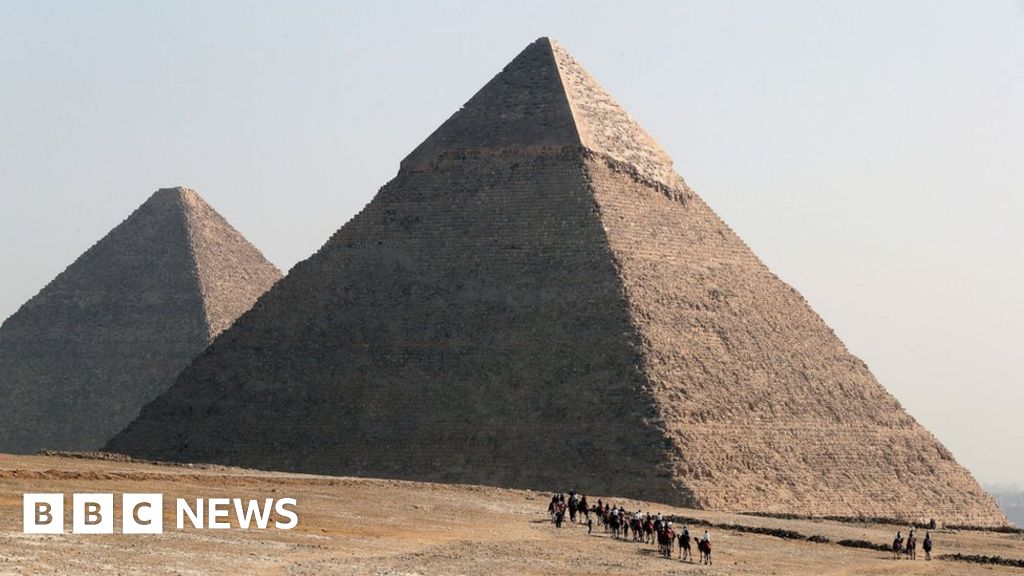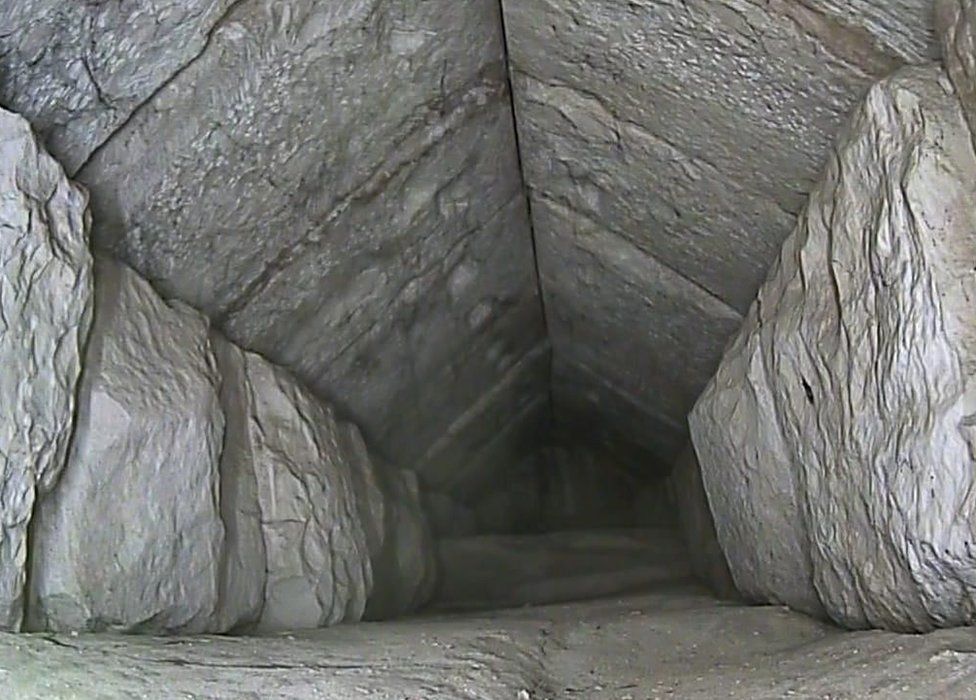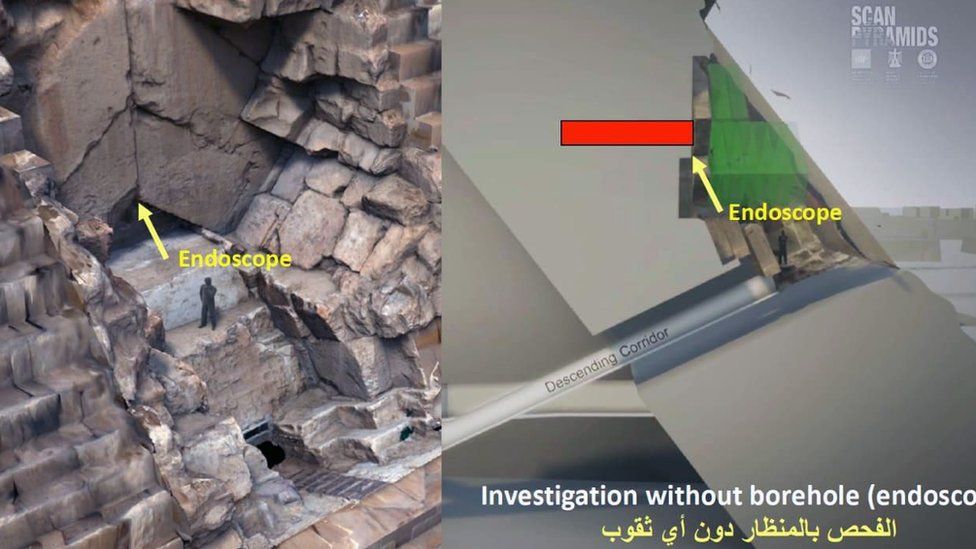Melodi
Disaster Cat
Images are included because of their importance to the story.

Egypt: Hidden corridor in Great Pyramid of Giza seen for first time
An endoscope was used to film inside the 9m-long space, whose purpose is still unknown.
www.bbc.com

Egypt: Hidden corridor in Great Pyramid of Giza seen for first time
An endoscope was used to film inside the 9m-long space, whose purpose is still unknown.
www.bbc.com
Egypt: Hidden corridor in Great Pyramid of Giza seen for first time
- Published
15 hours ago
- Published

Image caption,
Video footage from an endoscope showed an empty corridor with a vaulted ceiling
By David Gritten
BBC News
Egyptian antiquities officials say they have confirmed the existence of a hidden internal corridor above the main entrance of the Great Pyramid of Giza.
Video from an endoscope showed the inside of the corridor, which is 9m (30ft) long and 2.1m (7ft) wide.
The officials say it could have been created to redistribute the pyramid's weight around the entrance or another as yet undiscovered chamber.
It was first detected in 2016 using an imaging technique called muography.
A team of scientists from the ScanPyramids Project were able to sense density changes inside the pyramid by analysing how it was penetrated by muons, which are by-products of cosmic rays that are only partially absorbed by stone.
The non-invasive technique detected an empty space behind the northern face of the Great Pyramid, about 7m above the main entrance, in an area where there is a stone chevron structure.
Further tests were carried out with radar and ultrasound before a 6mm-wide (0.24in) endoscope was fed through a tiny joint in-between the stones that make up the chevrons.

Image caption,
The endoscope was pushed into the empty space behind a chevron structure on the pyramid's wall
The footage from the camera was unveiled at a news conference beside the pyramid on Thursday. It showed an empty corridor with walls made out of roughly-hewn stone blocks and a vaulted stone ceiling.
"We're going to continue our scanning so we will see what we can do... to figure out what we can find out beneath it, or just by the end of this corridor," said Mostafa Waziri, head of Egypt's Supreme Council of Antiquities.
The Great Pyramid, which is 146m high, was built on the Giza plateau during the fourth dynasty by the pharaoh Khufu, or Cheops, who reigned from around 2609BC to 2584BC.
Despite being one of the oldest and largest monuments on Earth, there is no consensus about how it was built.

Image caption,
The Great Pyramid, seen in the background, is the largest of the three pyramids located at Giza
Egyptian archaeologist Zahi Hawass said the corridor represented a "major discovery" that would "enter houses and homes of people all over the world for the first time".
He also said that it might help reveal whether the burial chamber of King Khufu still existed inside the pyramid.
He speculated that there might be "something important" in the space below the corridor, then added: "I'm sure in a few months from now we can see if what I'm saying is correct or not."
A second, larger void inside the pyramid was detected using muography in 2017. It is estimated to be 30m long and several metres in height and is located directly above the Grand Gallery.
